The Chinese Communist Party (CCP) decided that all retractions which befell the nation’s top immunologist and chairman for research integrity, Xuetao Cao, are something the masses should not be informed of. Any reporting about Cao’s recently withdrawn 11 papers, making it 16 in total, all in the Journal of Biological Chemistry (JBC), is forbidden in China. But not just there!
First, some background for you to study and to recite. comrades. I wrote about the data manipulations in Chairman’s Cao’s papers first on 18 November 2019, after he was appointed in charge of research integrity in all China at a huge CCP congress in Beijing. Much of the evidence was exposed on PubPeer by Elisabeth Bik, soon others chimed in, like Smut Clyde, who published a follow-up story on 19.11.2019 (decorated with quotes from Chairman Cao’s party speech).

Comrade Cao, who carries the military rank of a general, has currently 73 papers flagged on PubPeer for data forgery, one could say his lab is a one-man-papermill, with the entire Chinese armed forces standing behind him. Because in the socialism some animals are more equal than the others, Cao was spared the fate of his pedestrian Chinese peers whose fake papers get mass retracted all the time, even for smaller issues than found in Cao’s cancerous research. In fact, rumours go it was the Chinese military which ordered utter silence in the General Cao affair, not the Ministry of Science and Technology which publicly sanctioned him, even without finding misconduct.
On top of that, the immunologist is a major bigwig not just in China, but internationally. The member of various academies in China, USA, Germany, UK and France is up there with the other gods, and every single publisher knows to treat Professor Cao accordingly. This all explains why of these 73 papers on PubPeer many weren’t even tainted with a corrigendum.
Only JBC didn’t get the memo. They even screened those Cao papers which were never flagged on PubPeer, and retracted them when fraud was found. The journal and its publisher American Society for Biochemistry and Molecular Biology (ASBMB) established a zero-tolerance policy for data forgery (read my interview here with their former research integrity manager, Kaoru Sakabe). Cao is by far not the first top scientist to have been slapped with mass retractions by that journal. For example: just before the Cao case, Spanish scientists and media went nuclear on JBC and ASBMB over 8 retractions for their nation’s martyr saint, St Carlos of Oviedo (aka Carlos Lopez-Otin).
By the end of 2020, Cao had 4 retractions at JBC (one was older, already from 2015). On 1 January 2021, a dozen more retractions were issued by JBC, first online, later in successive journal issues, making it a total of 16 retractions. Something needed to be done. So the CCP, in all its bottomless wisdom, announced the results of its investigation on 21 January 2021 (read my coverage here):
1. Investigation conclusions and handling opinions on academician Cao Xuetao’s thesis
The 63 papers of Academician Cao Xuetao were questioned on the Internet. After investigation, no fraud, plagiarism and plagiarism were found, but many papers were found to have misuse of pictures, reflecting the lack of a strict laboratory management. After reviewing the joint working mechanism, it was decided to cancel Academician Cao Xuetao’s qualification for applying for the national science and technology plan projects for one year, cancel his qualification as an expert in scientific and technological activities supported by financial funds for one year, and cancel the qualification for enrolling graduate students for one year. He is instructed to carry out corrections, make in-depth inspections of existing problems, and report criticisms in the corresponding department of the Academy of Engineering.
A slap on the wrist, but good news: no misconduct found and no retractions requested, hinting that the CCP disapproves of JBC‘s previous actions. Chinese media duly reported, and so did western science journalists. Science titled “High-profile Chinese scientist cleared of fraud and plagiarism charges involving more than 60 papers“, mentioning 4 retractions, including the one from 2015. Nature‘s headline went: “Famed Chinese immunologist cleared of plagiarism and fraud” and mentioned only 3 withdrawals. Chemistry World, published by the Royal Society of Chemistry, ran this title: “Prominent Chinese immunologist and research integrity leader cleared of scientific misconduct“, and said that “At least four of Xuetao Cao’s papers flagged on PubPeer have been retracted to date“.
It was 16 at that time already, but for some reason they did not make it into the Retraction Watch database, which even at the time of writing listed only 8 retractions for Xuetao Cao (Correction: the RW database erroneously lists a corrigendum for Bao et al JBC 2012 as a retraction, meaning only 7 retractions are actually listed). Which is weird, this database was funded with $700k in grants to Retraction Watch and yet it still has such strange hickups.

And now, the CCP, or in this case rather the People’s Liberation Army, banned all reporting about the recent Cao retractions at JBC. Like the recent Oscar for the Chinese film director Chloé Zhao: it didn’t happen, try to even think about it and you’ll regret it.
Here is a screenshot of a short-lived article in Chinese. It was deleted soon after it appeared, and all that article wrote about Cao, after mentioning his acquittal in that misconduct investigation, was the list of his recently retracted 11 papers at JBC.

Before laughing at the ridiculous Chinese censorship which denies people basic information: where else did you read about Cao’s recently issued 12 extra retractions? Nowhere, that’s where. Remember that the last time Science and Nature wrote about Cao was to inform you of the CCP findings that he was innocent of research misconduct. In China, disobedience is punished mercilessly. You will get summoned to police, fired from your job, your relatives may get fired as well, your children expelled from school or university, you can get imprisoned or even executed, for your crime of stating facts you were not allowed to state because CCP said so.
But in the free world outside? Why are they all self-censoring then? Because your international publishing business might lose a paying customer, remember that China is the world’s biggest producer of scientific research, paper-wise. Sure, much of it is fake, made by paper mills even, but fiction is what scholarly publishing business is all about at the end.
Never mind, surely Retraction Watch and its intrepid watchdogs Ivan Oransky and Adam Marcus covered the mass retractions of Cao, right? Well. This is what the search of the website delivers:

The older of the two articles, from 30.11.2019, merely mentions in passing “Four journals also say they are scrutinizing papers coauthored by Cao Xuetao after scientists raise questions about images on Twitter and PubPeer” (not on For Better Science obviously, Retraction Watch doesn’t even allow reader comments mentioning my site). The newer article from 30.09.2021 reports two retractions by Cao in JBC, in the story’s second section. After that: nothing, until today. Not even when Cao retracted 13 more papers later on. Retraction Watch is not interested in watching THAT kind of retractions, one could think.
[a reader pointed out below that I mistook two Cell corrigenda for new Cao papers in that journal (PubMed is a bit confusing in this regard). A paragraph here was deleted, I apologise for the confusion. Cao continues to publish quite well though, here Wang et al Immunity 2020 (Cell Press) or Liu et al PNAS 2020].

Especially since Elsevier uses the image integrity analysis software by this obscure Indian company TNQ to screen the submissions (a source with inside knowledge told me this). TNQ website doesn’t even advertise any image manipulation or duplication detection skills online, only general editing services, like html proof-reading. Does the TNQ image detection work? It depends on what Elsevier wants it to achieve. If the real purpose of this technology for Elsevier is to pretend to check, and to pretend the data passed the integrity tests, it works beautifully. Just like its counterpart Aira at Frontiers, it’s there to pretend, not to actually detect anything. We all care for research integrity here, and everything we publish has been vetted and hence 100% trustworthy!
In this regard, it is a bit worrisome that JBC is now being published by Elsevier. And what if the two people who drove the research integrity policy, the journal’s Editor-in-Chief Lila Gierash or the deputy editor and former ASBMB president Fred Guengerich, should step down one day? Will JBC be drawn to the dark side by Elsevier, never to retract a fraudulent paper again without authors’ permission?
As it happens, the new JBC publisher Elsevier already introduced some new rules. The original authors’ manuscripts, once very useful to de-construct inappropriately assembled images, have been all removed and replaced with low-resolution final edited versions. This is why for some of the retractions, those without earlier PubPeer clues, the original shenanigans cannot be traced back. Basically, Elsevier destroyed evidence.
Because nobody else does it, not even Retraction Watch in its database, I collated the 16 JBC retractions of Chairman Cao below. With illustrations.
Chairman Cao’s 16 Retractions They Don’t Want You to Know About

- Xiaojian Wang , Bin Liu , Nan Li , Hongzhe Li , Jianming Qiu , Yuanyuan Zhang , Xuetao Cao IPP5, a novel protein inhibitor of protein phosphatase 1, promotes G1/S progression in a Thr-40-dependent manner The Journal of biological chemistry (2008) doi: 10.1074/jbc.m801571200 Retraction 6.03.2015

2. Queenie Lai Kwan Lam , Bo-Jian Zheng , Dong-Yan Jin , Xuetao Cao, Liwei Lu Leptin induces CD40 expression through the activation of Akt in murine dendritic cells The Journal of biological chemistry (2007) doi: 10.1074/jbc.m704579200 Retraction 21.08.2020
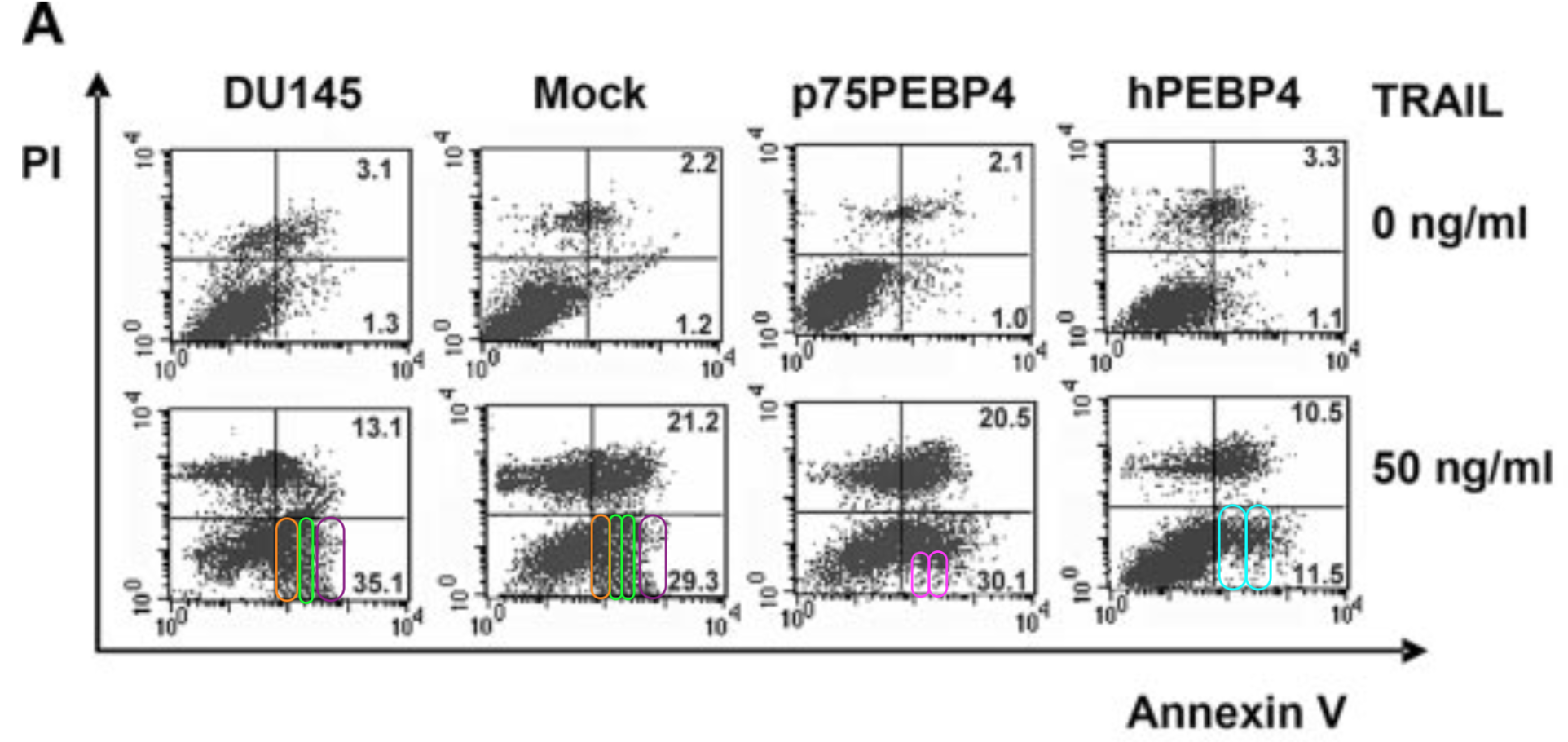
3. Hongzhe Li , Xiaojian Wang , Nan Li , Jianming Qiu , Yuanyuan Zhang , Xuetao Cao hPEBP4 resists TRAIL-induced apoptosis of human prostate cancer cells by activating Akt and deactivating ERK1/2 pathways The Journal of biological chemistry (2007) doi: 10.1074/jbc.m609494200 Retraction 25.09.2020.

4. Xiaojian Wang, Nan Li, Bin Liu, Hongying Sun, Taoyong Chen, Hongzhe Li, Jianming Qiu, Lihuang Zhang, Tao Wan, Xuetao Cao A novel human phosphatidylethanolamine-binding protein resists tumor necrosis factor alpha-induced apoptosis by inhibiting mitogen-activated protein kinase pathway activation and phosphatidylethanolamine externalization The Journal of biological chemistry (2004) doi: 10.1074/jbc.m405147200 Retraction 25.09.2020
5. Chen Wang , Taoyong Chen , Ning Zhang , Mingjin Yang , Bai Li , Xiang Lü , Xuetao Cao , Changquan Ling Melittin, a major component of bee venom, sensitizes human hepatocellular carcinoma cells to tumor necrosis factor-related apoptosis-inducing ligand (TRAIL)-induced apoptosis by activating CaMKII-TAK1-JNK/p38 and inhibiting IkappaBalpha kinase-NFkappaB The Journal of biological chemistry (2009) doi: 10.1074/jbc.m807191200 Retraction 01.01.2021

6. Nan Li, Chunmei Wang , Yanan Wu , Xingguang Liu , Xuetao Cao Ca(2+)/calmodulin-dependent protein kinase II promotes cell cycle progression by directly activating MEK1 and subsequently modulating p27 phosphorylation The Journal of biological chemistry (2009) doi: 10.1074/jbc.m805483200 Retraction 01.01.2021
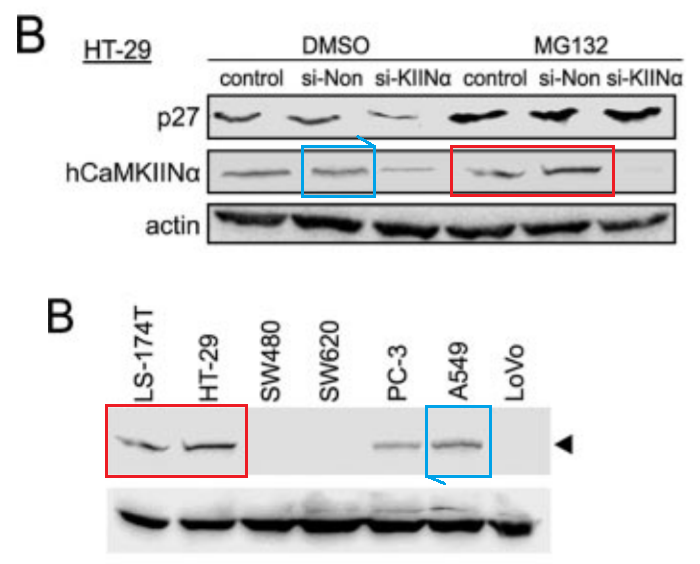
7. Chunmei Wang , Nan Li , Xingguang Liu , Yuanyuan Zheng , Xuetao Cao A novel endogenous human CaMKII inhibitory protein suppresses tumor growth by inducing cell cycle arrest via p27 stabilization The Journal of biological chemistry (2008) doi: 10.1074/jbc.m800436200 Retraction 01.01.2021
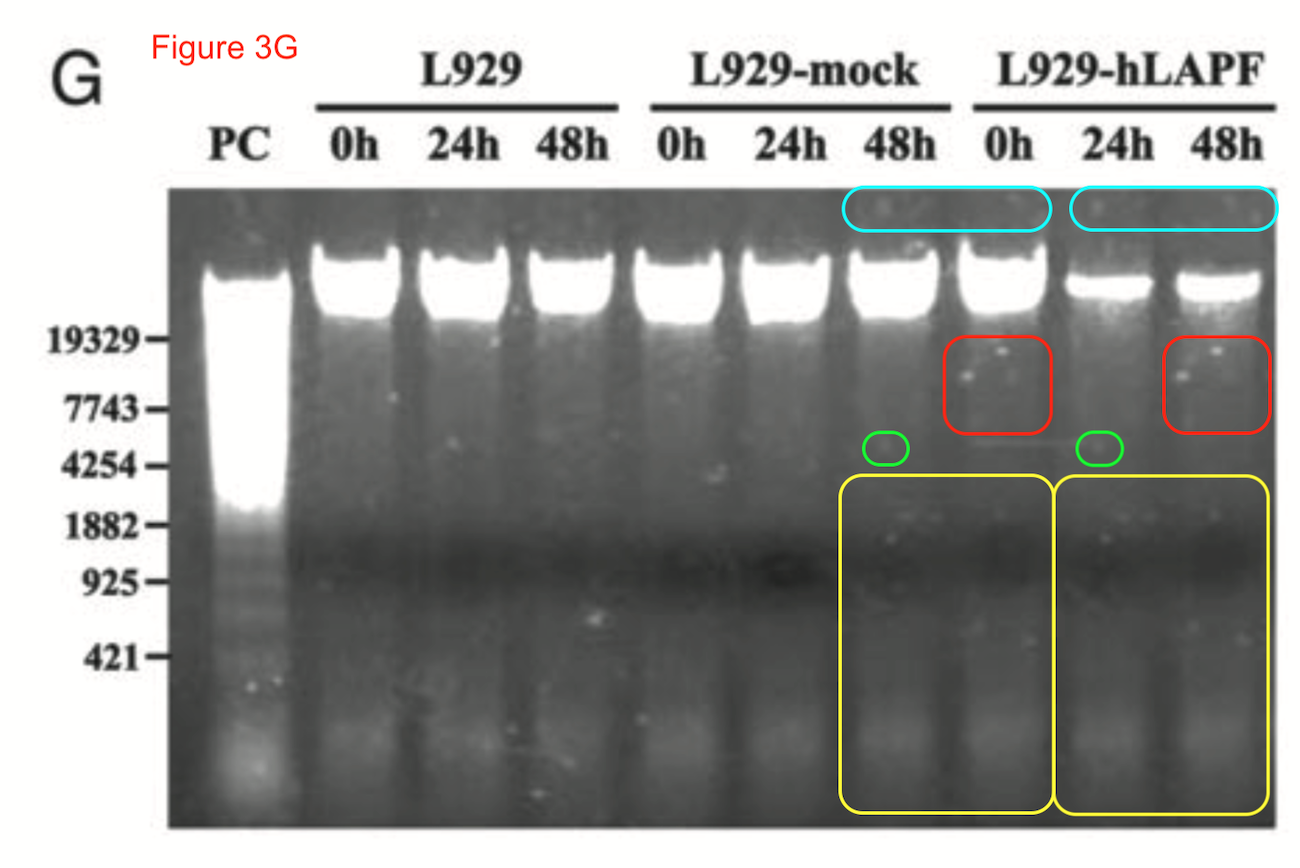
8. Wei Chen, Nan Li, Taoyong Chen, Yanmei Han, Changfei Li, Yuzhen Wang, Weigang He, Lihuang Zhang, Tao Wan, Xuetao Cao The lysosome-associated apoptosis-inducing protein containing the pleckstrin homology (PH) and FYVE domains (LAPF), representative of a novel family of PH and FYVE domain-containing proteins, induces caspase-independent apoptosis via the lysosomal-mitochondrial pathway The Journal of biological chemistry (2005) doi: 10.1074/jbc.m502190200 Retraction 01.01.2021
9. Tao Wang, Dajing Xia , Nan Li , Chunmei Wang , Taoyong Chen , Tao Wan , Guoyou Chen , Xuetao Cao Bone marrow stromal cell-derived growth inhibitor inhibits growth and migration of breast cancer cells via induction of cell cycle arrest and apoptosis The Journal of biological chemistry (2005) doi: 10.1074/jbc.m408708200 Retraction 01.01.2021
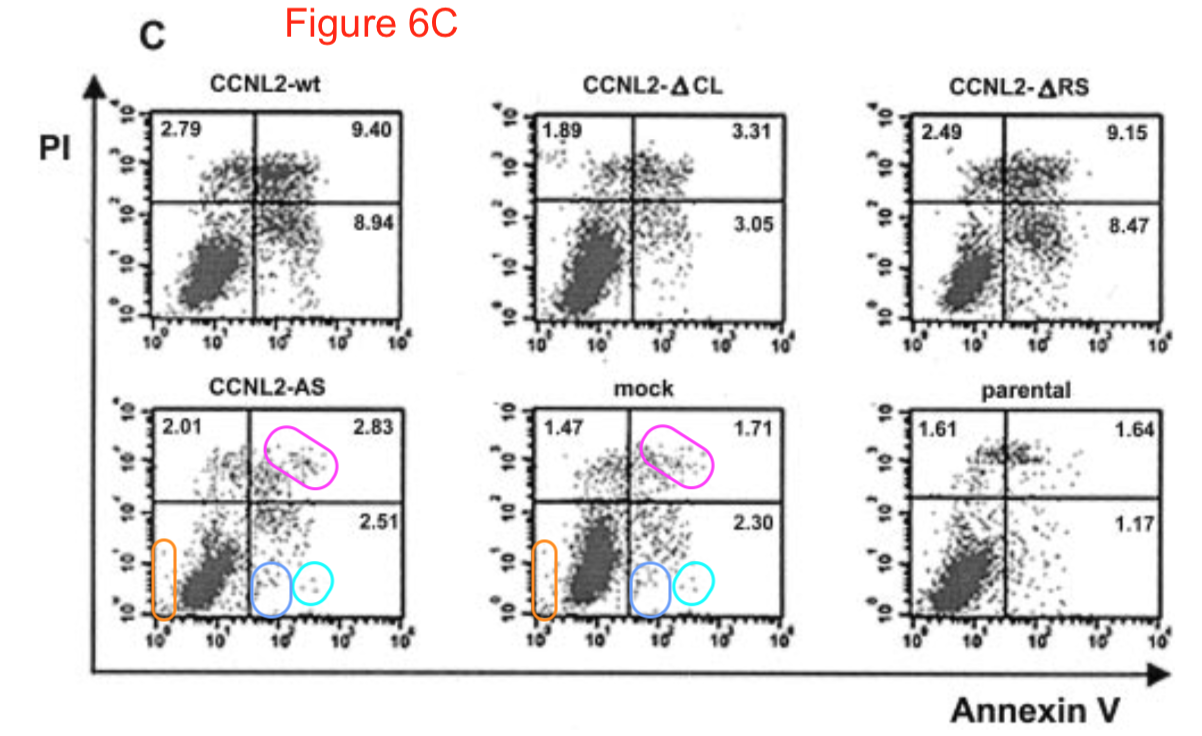
10. Lianjun Yang, Nan Li, Chunmei Wang, Yizhi Yu, Liang Yuan, Minghui Zhang, Xuetao Cao Cyclin L2, a novel RNA polymerase II-associated cyclin, is involved in pre-mRNA splicing and induces apoptosis of human hepatocellular carcinoma cells The Journal of biological chemistry (2004) doi: 10.1074/jbc.m312895200 Retraction 01.01.2021
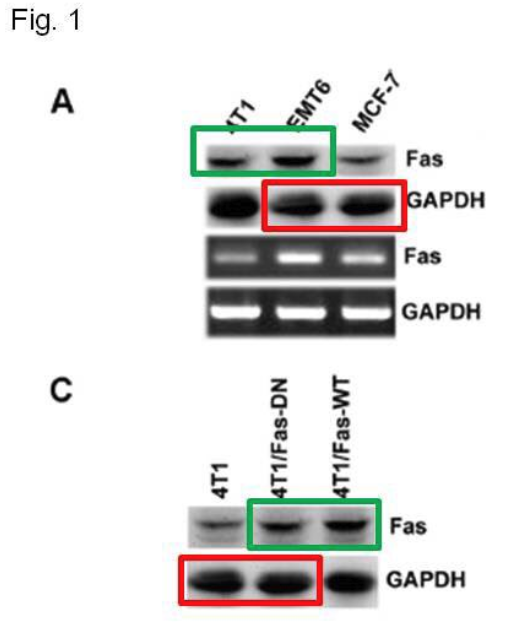
11. Qiuyan Liu, Qinchun Tan, Yuanyuan Zheng, Kun Chen, Cheng Qian, Nan Li, Qingqing Wang, Xuetao Cao Blockade of Fas signaling in breast cancer cells suppresses tumor growth and metastasis via disruption of Fas signaling-initiated cancer-related inflammation The Journal of biological chemistry (2014) doi: 10.1074/jbc.m113.525014 Retraction 01.01.2021
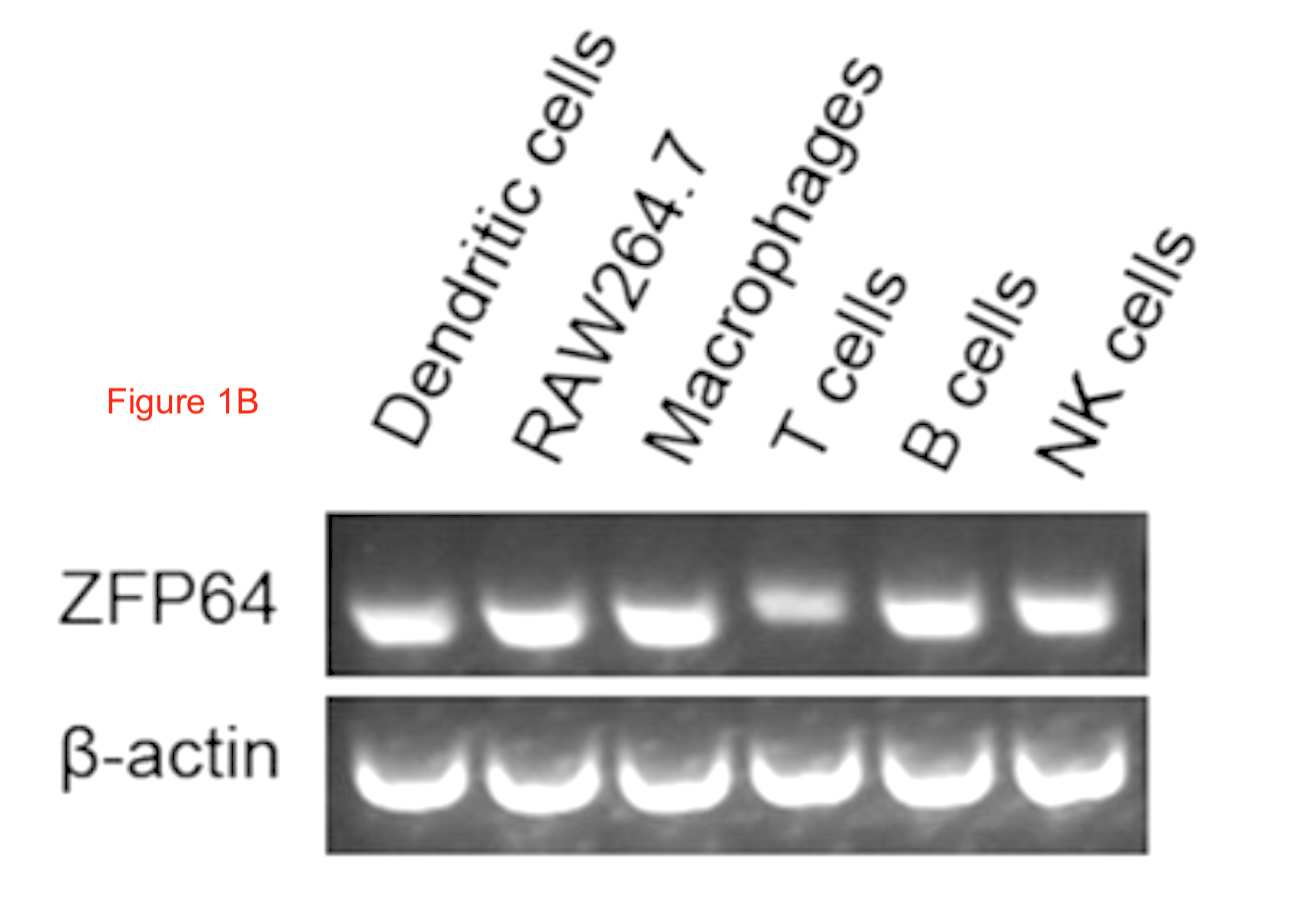
12. Chunmei Wang, Xingguang Liu, Yin Liu, Qian Zhang, Zhenyu Yao, Bo Huang, Peng Zhang, Nan Li, Xuetao Cao Zinc finger protein 64 promotes Toll-like receptor-triggered proinflammatory and type I interferon production in macrophages by enhancing p65 subunit activation The Journal of biological chemistry (2013) doi: 10.1074/jbc.m113.473397 Retraction 01.01.2021
13. Shuo Ye, Hongmei Xu , Jing Jin , Mingjin Yang , Chunmei Wang , Yizhi Yu , Xuetao Cao The E3 ubiquitin ligase neuregulin receptor degradation protein 1 (Nrdp1) promotes M2 macrophage polarization by ubiquitinating and activating transcription factor CCAAT/enhancer-binding Protein β (C/EBPβ) The Journal of biological chemistry (2012) doi: 10.1074/jbc.m112.383265 Retraction 01.01.2021
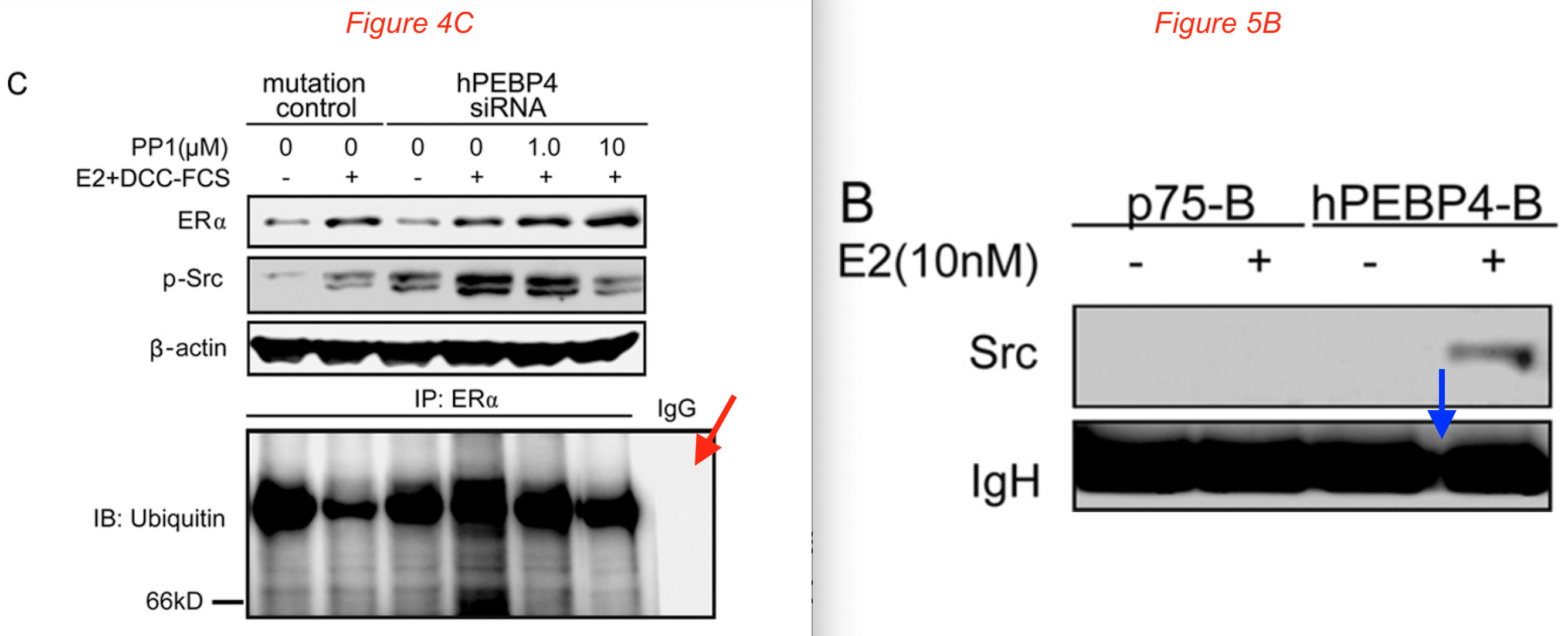
14. Haibo Liu, Jianming Qiu, Nan Li, Taoyong Chen, Xuetao Cao Human phosphatidylethanolamine-binding protein 4 promotes transactivation of estrogen receptor alpha (ERalpha) in human cancer cells by inhibiting proteasome-dependent ERalpha degradation via association with Src The Journal of biological chemistry (2010) doi: 10.1074/jbc.m110.109876 Retraction 01.01.2021
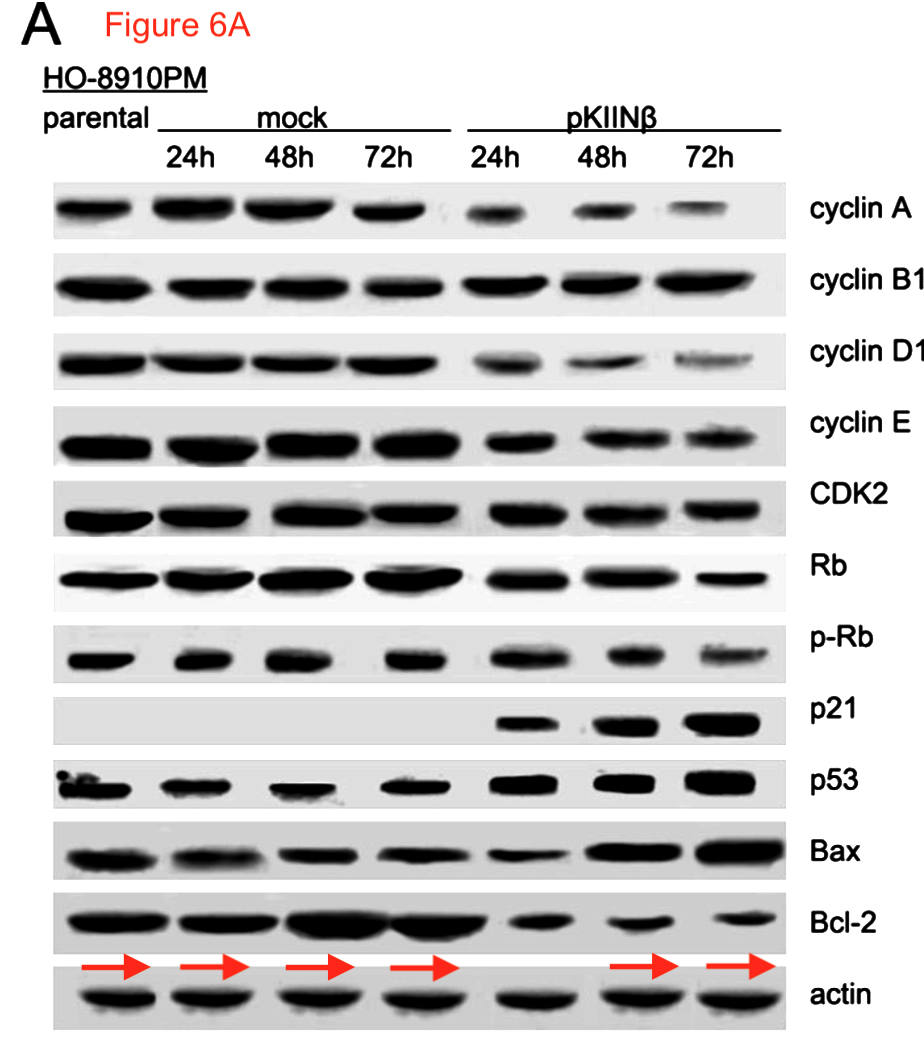
15. Shenglin Ma , Yunshan Yang , Chunmei Wang , Ning Hui , Linhui Gu , Haijun Zhong , Zhijian Cai , Qingqing Wang , Qinghua Zhang , Nan Li , Xuetao Cao Endogenous human CaMKII inhibitory protein suppresses tumor growth by inducing cell cycle arrest and apoptosis through down-regulation of the phosphatidylinositide 3-kinase/Akt/HDM2 pathway The Journal of biological chemistry (2009) doi: 10.1074/jbc.m109.028621 Retraction 01.01.2021
16. Chunmei Wang , Runzi Qi , Nan Li , Zhengxin Wang , Huazhang An , Qinghua Zhang , Yizhi Yu, Xuetao Cao Notch1 signaling sensitizes tumor necrosis factor-related apoptosis-inducing ligand-induced apoptosis in human hepatocellular carcinoma cells by inhibiting Akt/Hdm2-mediated p53 degradation and up-regulating p53-dependent DR5 expression The Journal of biological chemistry (2009) doi: 10.1074/jbc.m109.002105 Retraction 01.01.2021
A successful dictatorship doesn’t need to force its subjects to comply. Anticipatory obedience is when you do things without being told, because you know what the dictator expects. You censor yourself, and you censors others. You report rule-breakers and you punish them. You teach yourself to think correctly. “The Party told you to reject the evidence of your eyes and ears. It was their final, most essential command“, as George Orwell wrote. This applies also to those in the free world who want to do business with China.
These 16 retractions didn’t happen, get it into your stupid head you reactionary peasant, or it will roll. For your own good, don’t mention Xuetao Cao at all, let him quietly publish in Cell until the air is clear.
Update 5.062021
Xuetao Cao and co-authors issued a statement about the JBC retractions, alleging anti-Chinese “double-standards”:
“Regrettably, the editorial department of JBC did not follow the international academic publishing standards widely recognized by the scientific community (COPE) and did not agree to use the correct original picture or updated picture to make corrections in the paper. In addition, a comparative analysis in JBC found that some there are even more errors in papers from European and American laboratories that have agreed to errata (not withdrawn), There are also a lot of JBC papers questioned on the website Pubpeer, for example 2020年5月-12 Within half a year, multiple JBC articles were questioned, and the editorial department did not deal with most of them. This reflects the possibility of double standards on one level. Under this circumstances, our team decided to withdraw these papers voluntarily, intending to further supplement and improve the new experimental results and reorganize and publish them with a higher standard.”
Full statement here.

Donate!
If you are interested to support my work, you can leave here a small tip of $5. Or several of small tips, just increase the amount as you like (2x=€10; 5x=€25). Nobody else writes about these retractions.
€5.00

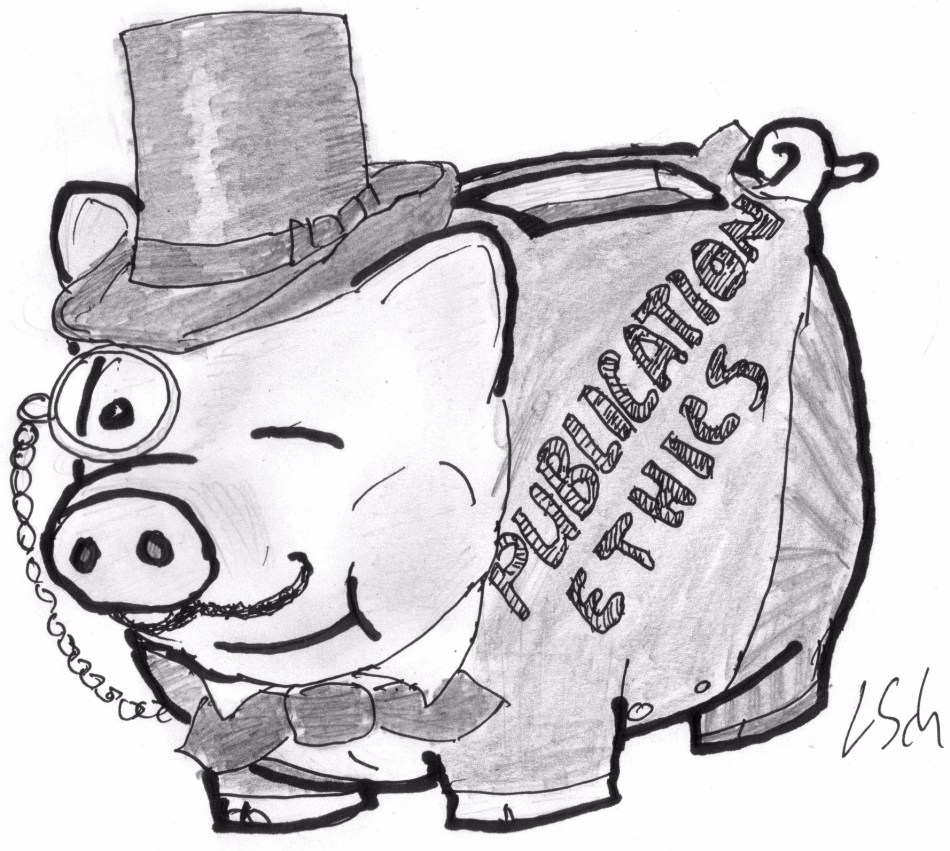

Hi Leonid,
This is a good scoop, thankyou for reporting it. Censorship on the part of others though? There is a simpler explanation — the retractions have only just occurred.
From what I can see, at the time of the January 2021 reporting of the results of the investigation into Xuetao Cao, 12 of these retractions had not appeared. Despite their given dates of ’01 January 2021′ they were first posted online variously on 22 and 23 May 2021, it seems (as PubPeer postings also have noted). Note: I couldn’t conclude this for all of them since JBC is a little spotty about making clear when it posts notices online.
That would explain why the reports you noted don’t mention all these retractions in them. As of 2 June, PubMed still thinks that Cao only has the three recent retractions plus one old one — it hasn’t yet caught up either.
At the time of the investigation results into Cao, he had:
One retraction (author withdrawal) in JBC in 2015, four years before Bik and others raised queries about his papers on PubPeer.
Three retractions in JBC (after queries were raised).
These are the first four listed of the 16 at the bottom of this thread.
(Because the first retraction had occurred four years before queries were raised about Cao, this is why Nature wrote in January 2021, referring to the papers that the investigation looked into: “19 have been corrected and 3 have been withdrawn since Bik first flagged the papers.”).
Richard. (features editor at Nature).
LikeLike
Hi Richard,
thanks for commenting here!
Sure, back in January these retractions were probably not visible yet. But now they are, and I am still the only one writing about it. Not even the watchdogs whose main business is to watch retractions are watching those retractions.
Btw, I have no idea why RW database, which everyone relies on, lists only 8 Cao retractions.
LikeLike
Well, you’re the one writing about them because you’re the one who spotted them, so it’s your scoop! Just making clear what was and wasn’t known in January … 😉
btw, RW database currently (of 2 June) lists 8 Cao retractions but one is erroneously recorded as a retraction; it’s a correction, so it should be 7 retractions. Four were known about in January and three that it has recently listed (recorded as appearing online 13 May 2021).
LikeLike
Thanks, I corrected the bit about RW database.
$400K from McArthur and $300k from Arnold, and it still doesn’t work properly. Send in more cash!
https://retractionwatch.com/2015/08/03/new-300000-grant-marks-the-fifth-anniversary-of-retraction-watch/
LikeLike
Let’s see if Nature finds it newsworthy 😉
LikeLike
His buddy Nicholas Peppas: “Elected to the Chinese Academy of Engineering, 2018; Elected Honorary Professor, Beihang University, Beijing, 2018” Appears to be a Cao plant in the USA and a PLA asset. Hopefully the feds will go after him.
Weird that Oransky has said so little, and glad you pointed this out. He may fear repurcussions, or maybe he is a PLA asset as well.
LikeLike
Looks like the Chinese science fish is indeed rotting from the head down. I used to be outraged by this guff, but I have come to see folks like Cao as something like the cheesy car dealers, home renovators and god-botherers who rent time on local TV channels late at night and on weekends in hopes of roping in suckers with their bullshit advertisements. If they help to keep journals running to support legitimate efforts, then aside from the stench of fraud that risks tainting the entire scientific endeavor, their net effect is not that harmful. What is important is that the scientific community must not validate this crap by citing it. I double check everything my searches turn up that comes out of China to avoid legitimizing their garbage output. We must all be vigilant in this regard. Remember that a scientific paper ain’t a paper if nobody notices it!
LikeLike
See my update. It’s all a racist conspiracy against the Chinese, and against COPE rules on top! https://mp.weixin.qq.com/s/O3Lje5co7yjwleR1EtGISw
LikeLike
Hi Leonid – Great work! Looks like the 2 Cell ‘papers’ you referred to are actually errata for older articles. Could you double-check? Thanks.
LikeLike
Ooops, will check later and correct if I made a mistake. Thanks!
LikeLike
You were right, paragraph deleted, notice posted instead. Apologies to you all except to Elsevier.
LikeLike
Any easy mistake to make. Of the 37 entries in PubMed for Cao in the past year and a half, 20 are author or journal corrections. And then of course the secret withdrawals…
LikeLiked by 1 person
https://mp.weixin.qq.com/s/O3Lje5co7yjwleR1EtGISw
Thank you for your attention to the work of Cao Xuetao’s team. The team and collaborators attach great importance to and treat each questioned paper carefully:
1) For all experimental results involved in the images of questioned papers, no matter which journal the paper was published in, we have all repeated the experiment. Many experiments have been independently repeated by different research groups of the team in the past research process. The results of these repeated experiments are consistent with the original results, proving that all experiments are reproducible, the experimental results are reliable, and the experimental conclusions are verifiable.
2) These were published in the American Journal of Biological Chemistry (JBC) Many papers are about the team90Research on the function of completely new genes and their encoded protein molecules independently discovered and cloned from immune cell sequencing at the end of the decade, The results of the new molecules and their functions and mechanisms reported for the first time in the thesis were subsequently confirmed by other research teams at home and abroad independently, proving that our research results are repeatable and reliable. These original discoveries from China that contribute to disease prevention and control cannot be obliterated. The molecules independently discovered by the team still exist and will continue to play a role.
3) In questionJBCIn the paper,70%The above was published in10Many years ago, the earliest published in2004-2005In 2015, the research started even earlier, when the conditions for scientific research were relatively rudimentary. Due to the long time of research and publication, the upgrading of equipment, and the turnover of laboratory personnel, although the team made every effort, some experiments still could not find the original data at that time. We giveJBCThe editorial department has repeatedly submitted the original data of independent repeated experiments and other international experimental teams to verify the reproducibility of our experiments, and submitted some original data and records related to the papers that can be found. RegrettablyJBCThe editorial department did not follow the international academic publishing standards widely recognized by the scientific community (COPE) Agree to use the correct original picture or updated picture to make corrections in the paper. In addition, the comparative analysis found that someJBCThere are even more errors in papers from European and American laboratories that have agreed to errata (not withdrawn),PubpeerThere are also a lot of questioned on the websiteJBCPapers, for example2020年5月-12Within half a year460Multiple articlesJBCThe paper was questioned, and the editorial department did not deal with most of them. This reflects the possibility of double standards on one level.Under this circumstance, the team decided to withdraw these papers voluntarily, intending to further supplement and improve the new experimental results and reorganize and publish them with a higher standard.。
4) Papers in the field of biomedicine involve many experimental data and pictures. For picture presentation methods such as western blotting and gel electrophoresis involved in questioned papers, in10-20For a long time ago, there were no unified standards and norms. The current internationally recognized and promoted norms have been gradually established and improved by the academic community over the past ten years. As for reports that some papers questioned, the team has not yet seenPubpeerIn response to the above, we have carefully checked all the queries one by one, and have repeated all related experiments. The team has contacted the relevant editorial department for any corrections or clarifications. At the same time, it should be pointed out that quite a fewPubpeerThe question on the above is a misunderstanding or misunderstanding of the paper by the questioner, and there is no problem with the paper itself.
Some of the past papers have been questioned, and the team has been deeply introspecting. In the future, it will further strengthen the management of the team’s academic standards, streamline the team’s scale, adhere to academic standards and maintain scientific research integrity, and continue to carry out innovative research with a more rigorous attitude for the national biological Contribute to the development of medicine.
Cao Xuetao team June 2021
LikeLike
Pingback: “How can one artifically make this happen?” – For Better Science